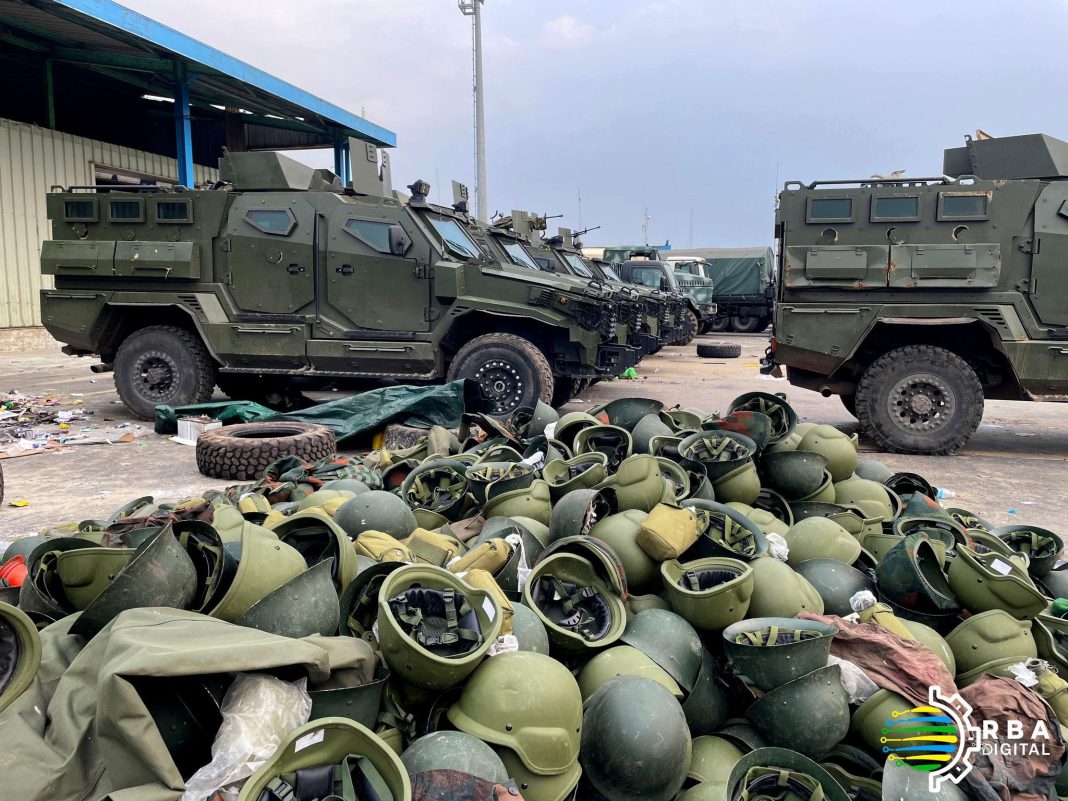International humanitarian organizations have announced the commencement of burial activities for victims of recent clashes between the Democratic Republic of Congo’s national army (FARDC) and M23 rebels. The ceasefire declared by M23 has allowed families and organizations to recover the bodies of over 2,500 soldiers from the FARDC side who perished in the fierce battles.
The strategic city of Goma, the capital of North Kivu Province, was captured by M23 on January 26, 2025. The fall came after an intense confrontation between M23 and a coalition comprising FARDC forces, Burundian Wazalendo fighters, and allied militia groups.
Upon entering Goma, M23 forces encountered abandoned military equipment, including tanks and firearms left behind by retreating FARDC soldiers. The streets bore grim evidence of the battle, with military vehicles scattered and containing the remains of soldiers who had fallen in combat.
Eyewitnesses reported a harrowing scene as survivors narrowly escaped under heavy gunfire. One FARDC soldier described the situation as hopeless:
“The enemy had completely encircled us. Defending the airport was impossible because M23 had surrounded the entire city and started shooting from all directions. We suffered heavy casualties. When I realized we were trapped, I knew survival was the only priority.”
Heavy Toll of War
United Nations reports estimate that approximately 3,000 people were killed during the conflict, including 2,500 FARDC soldiers and allied fighters. The intensity of the battle forced several FARDC troops to flee to Rwanda, seeking refuge.
Following the ceasefire, displaced residents have begun returning home. In Goma and other areas under M23 control, daily activities are gradually resuming.
Notably, the Kanyarucinya camp, which had housed thousands of displaced individuals, has now been officially closed as residents have returned to their homes in Nyiragongo territory.
M23 has reportedly facilitated the safe transportation of displaced persons from Mugunga camp back to their homes in Masisi.
Observers have raised concerns about the role of MONUSCO, the UN peacekeeping mission stationed in eastern DRC since 1999. Analysts suggest that the mission’s prolonged presence may have inadvertently contributed to instability. Critics claim that MONUSCO’s recent actions, including its departure from conflict zones, are attempts to justify its continued operations in the region.
Many UN personnel have fled eastern DRC, crossing into Rwanda through the Rubavu border and proceeding to Kinshasa and other safer regions.
As Goma rebuilds after the chaos, international attention remains focused on finding a lasting solution to the security crisis in eastern Congo. The ceasefire offers a glimmer of hope, but sustainable peace remains elusive.



